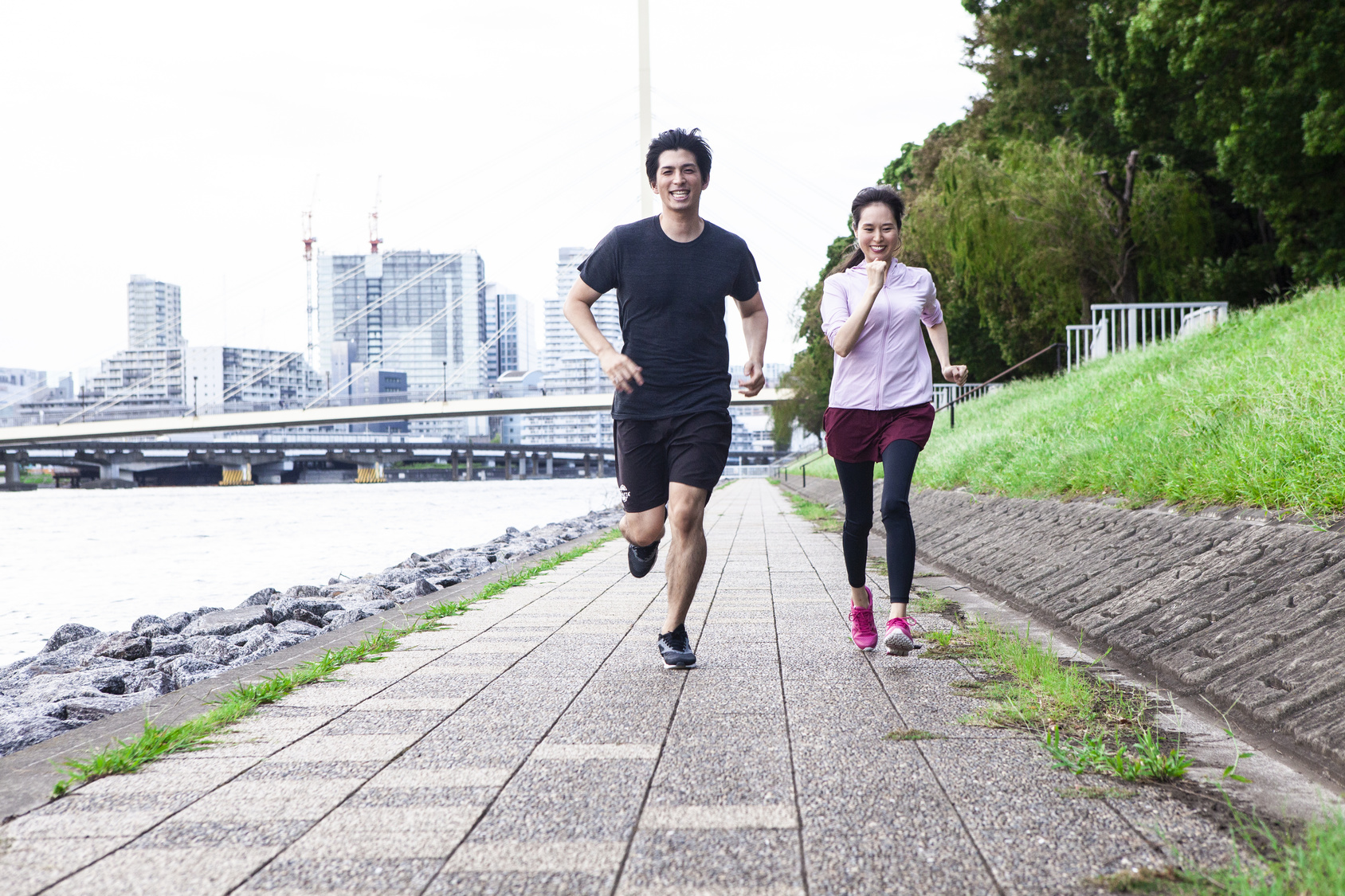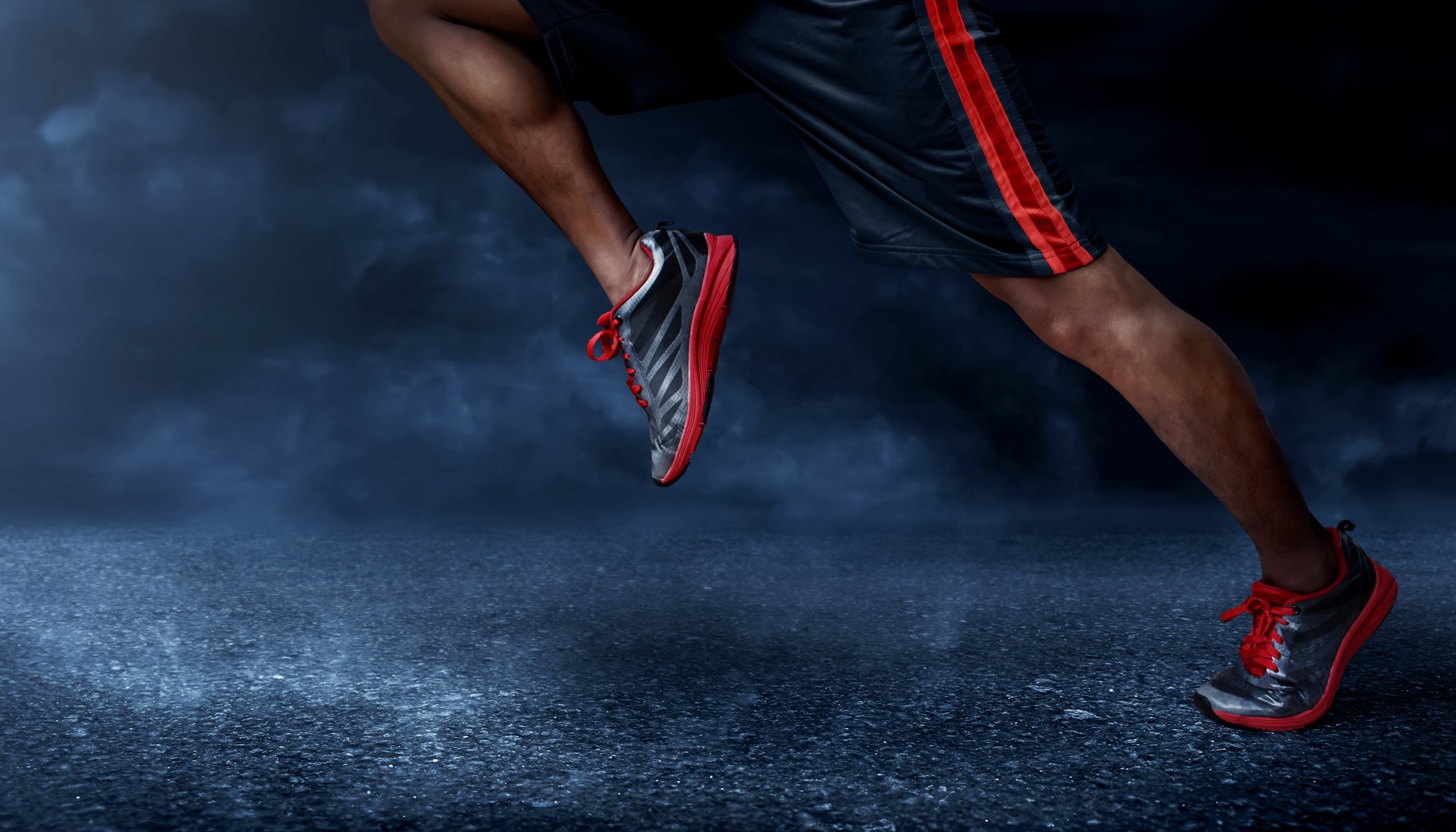Whether you’re lacing up for your first mile or you’ve been pounding pavement for years, one thing’s for sure: good form matters.
Back when I was a rookie, I figured running was just… running. You move your legs and go, right?
Wrong. A few months in, I was nursing sore knees, a tight back, and wondering if running just “wasn’t for me.”
Turns out, I was running like a collapsed lawn chair—slouched over, feet flopping, breathing like I was chasing a bus.
One day my cousin (also national athlete) said, “David, straighten up. You look like you’re melting.” That stung—but he was right.
When I fixed my posture, everything changed. My body stopped fighting itself, and running finally started to suck less.
If you’re frustrated with aches, sluggish miles, or just want to run smoother, you’re in the right place.
This isn’t some complicated breakdown. It’s a runner-to-runner guide, built on real experience and coaching others through the same struggles.
Let’s get to it.
What Is Good Running Form
Running form is just how your body moves while you run—your posture, how your feet hit the ground, your arms, your rhythm.
Think of it like building a house: if the foundation’s solid, the rest holds up.
So why does it matter? Two big reasons:
It saves energy. Good form helps you run with less effort. No wasted motion. You’re not dragging or fighting gravity—you’re moving with it.
It prevents injuries. Bad form puts stress in all the wrong places. Ankles, knees, hips—stuff breaks down fast if you’re landing heavy or slouching.
I had one client who showed up with shin splints every week. We figured out he was overstriding—reaching too far out in front. We fixed his stride and boom—pain gone. He went from dreading runs to actually enjoying them.
No two runners look exactly alike—your body, flexibility, and past injuries all play a role. But there are some basic principles that work for just about everyone.
Kinda like how everyone has their own handwriting, but we all use the same alphabet. Same idea here.
Running on the treadmill? Here’s your form guide.
How to Run Properly: One Piece at a Time
Trying to “fix your form” all at once is like trying to juggle five watermelons.
Let’s break it down piece by piece. Work on one thing at a time. Give it a few weeks. Let it click before moving on.
1. Posture: Run Tall with a Small Lean
If I could give just one tip to every new runner: run tall.
Seriously.
It changes everything.
When I first started out, my form was a mess—shoulders hunched, head down, arms dangling. After every run, my upper back was toast. I remember one brutally humid morning in Bali, halfway through a 5K. I was cooked.
Then I remembered my “string cue”—imagine a string pulling you up from the top of your head. I straightened up, leaned in slightly, and boom—my breathing got easier. It felt like my body started working with me instead of against me.
Here’s what to focus on:
- Stand tall. Don’t slouch. Imagine that invisible string lifting your head up. Keep your spine long and proud.
- Lean forward slightly. Not from your waist—hinge from your ankles. It should feel like you’re just about to fall forward, and your foot catches you.
- Engage your core. You don’t need to flex like you’re doing a plank, but stay lightly braced. Think “ready for a light punch” – just enough to stay stable.
- Relax your shoulders. This one gets missed all the time. I literally drop my arms and shake them out mid-run if I feel tension creeping in. Reset and keep moving.
- Eyes up. Not glued to the ground. Looking ahead naturally lifts your chest and sets your spine right. Plus, you won’t trip on a crack.
When you get this right, running gets smoother. You feel lighter. More flow, less fight.
Real Talk from the Trail
Some of this might feel weird at first—especially if you’ve been slumping for years. That’s normal. Your body’s learning a new habit.
But once it clicks, you’ll wonder how you ever ran any other way.
And trust me, this isn’t about chasing some picture-perfect “elite runner” form. It’s about feeling better, running stronger, and keeping your body happy over the long haul.
Arm Swing: Pump Back, Not Across
Most runners obsess over their legs. I get it—that’s what’s doing the pounding.
But your arms? They matter for your stride.
If your form feels off or you’re constantly dealing with side stitches, don’t just blame your core—check your arm swing.
I used to make a rookie mistake without even realizing it. During a workshop, a coach pointed out that I was swinging my arms across my chest like a boxer guarding his ribs.
It looked harmless, but that twist in my torso? It was messing with my balance and probably the reason I’d cramp up during faster runs.
Once I cleaned up my arm movement, it was like flipping a switch—my stride felt lighter, smoother. No more cramp. Just flow.
So What Should Your Arms Be Doing? Simple: Drive Them Back, Not Across.
Here’s how to make your arms work for you, not against you:
- Bend your elbows to about 90 degrees. Keep them close but relaxed—not clamped to your ribs or flapping out like chicken wings. Picture an L-shape. Compact, chill, efficient.
- Swing from your shoulders, not your elbows. Your hands should move from your waist up to around chest level. Coaches call it “hip to lip” or “pocket to ear.”
- Drive your elbows back. Think about elbowing someone behind you. That mental cue forces the right motion and helps your legs drive forward too. I still imagine an invisible runner behind me—keeps my form honest.
- Don’t let your hands cross your body’s midline. Picture a line dividing you in half—your hands shouldn’t drift across it. If they do, chances are you’re twisting your torso and throwing everything out of sync. Some runners imagine a narrow hallway in front of them. Stay in your lane.
- Your arms should swing with intention, not tension. Don’t clench your fists or shrug your shoulders. If your arms start feeling tight, shake them out mid-run and reset.
Want a quick drill? Stand still and pump your arms like you’re sprinting—just your arms. Drive them straight back. Feel the rhythm? That’s what you want while running—toned down a bit when jogging, but same motion.
When I finally fixed my swing, everything clicked. I wasn’t just avoiding cramps—I could charge up hills by pumping my arms a little more.
Head Position: Run Tall, Look Forward
“Keep your head up!” It’s not just something people yell at races to cheer you on. It’s legit running advice.
Your head controls the chain from your neck down—if it’s off, your whole form can go sideways.
Here’s the real talk on how to hold your head like a pro:
- Eyes forward, not down. Gaze about 10–15 feet ahead. That keeps your posture tall and helps you spot what’s coming. Don’t get stuck staring at your feet—you’re not running to admire your shoes.
- Don’t crane your neck. Looking down too long rounds your shoulders and collapses your chest. Try it right now—tilt your head down and feel how your whole upper body folds forward. Not great for breathing.
- Chin level. Not jutting out. Not tucked in like a turtle. I once had a coach tell me to imagine balancing a book on my head while running. Sounds silly, but it helps you stay upright.
- Ears over shoulders. This is the gold standard. If someone took a side photo of you, your ears should stack right above your shoulders. If your head’s poking out, you’re stressing your neck.
Did you know that for every inch your head leans forward, it adds around 10 extra pounds of pressure to your neck? No wonder it gets sore on long runs.
Oh—and don’t forget your face. Relax it. Drop the jaw tension. I’ve done mid-run cheek shakes and even blown out my lips like a horse to reset (yeah, I look ridiculous—but it works and always makes me laugh).
Hands and Shoulders: Keep It Loose, Not Lazy
Let’s talk tension — the kind you don’t notice until your shoulders are up by your ears and your fists feel like you’ve been punching walls for the last 10K.
If you’ve ever finished a run with a tight neck, sore forearms, or even tingling fingers, you’ve met the silent form killer: upper body tension.
Fix Your Hands First
Your hands aren’t just passengers. Clenched fists chain-react all the way up — tightening your forearms, then your biceps, then your shoulders. That’s energy you’re wasting, and in running, every ounce matters.
Here’s a trick I use (and teach): Pretend you’re holding a potato chip between your thumb and finger — light enough not to break it, firm enough not to drop it. Some runners literally train with chips in hand. Pringles don’t lie. Crack one, and you’re gripping too tight.
I personally go with a soft “OK” sign — thumb barely touching the side of my middle finger. Keeps everything chill. No curled fingers. No fists. Just flow.
Now Drop Those Shoulders
Your shoulders shouldn’t ride up like you’re bracing for a fight. Keep them down, relaxed. If they creep up mid-run (and they will), do what I call a “shrug-drop”: shrug your shoulders way up to your ears — then let them fall like dead weight. Boom. Reset.
Want a bonus posture fix? Gently squeeze your shoulder blades like you’re holding a pencil between them. Not tight — just enough to open up your chest and undo that desk-job hunch.
Quick Reset Tricks You Can Use Mid-Run
Shake it out. Drop your arms, dangle ‘em for a couple strides, then get back to form. Works like a charm.
Breathe deep. When you’re tight or anxious, your breathing goes shallow. Fix it with deep belly breaths — it calms the body and the brain.
Smile or laugh. Sounds silly, but it works. I sometimes force a grin on tough hills. Instantly loosens my face and helps my shoulders relax too. (And hey, running’s supposed to be fun, right?)
Drop your arms. If everything’s locking up, pause and let those arms hang. Shake ‘em out. Reset. Then back to business.
Forward Lean: Let Gravity Help You, Not Slam You
Here’s a form tip that changed the game for me: leaning slightly forward while you run. And I mean slightly. Think gentle slope, not nosedive.
I first came across this through the Chi Running method. They talk about leaning from the ankles — not the waist — to tap into gravity. I was skeptical. Thought I’d fall flat on my face.
But one day I gave it a shot.
And man — it clicked.
I wasn’t pushing harder, but I was moving faster. It felt like gravity was giving me a gentle pull, not dragging me down.
I thought, “This almost feels like cheating.” But it wasn’t — it was just smarter running.
Want to Feel It? Try This Drill:
Stand tall. Let yourself start to fall forward like a stiff board.
The moment you feel like you’re about to tip over, start running.
That angle — right there — is your sweet spot.
Form Fix Tips:
- Lean from the ankles. Keep that body line tight — no bending at the hips.
- Core on. Keep it tight like you’re doing a standing plank. That stabilizes everything.
- Keep it small. A few degrees is all you need. If you feel like you’re fighting to stay upright, dial it back.
- Use the downhills. Gentle downhill runs naturally put you in the right lean. Mimic that same feeling on flats.
When I combine a slight lean with a quicker cadence, I feel like I’m gliding. Less pounding, more flow.
Cadence: Step to the Beat
Let’s talk cadence—basically, how many steps you take per minute.
I used to ignore this until I realized how much it was messing with my running.
Fixing my cadence was one of those game-changing shifts that didn’t require any fancy gear—just attention and consistency.
Think of cadence like the rhythm of a song. The faster the beat (within reason), the smoother the tune. In running terms, a higher cadence usually means shorter, quicker steps instead of long, pounding strides. That translates into less stress on your joints and better form.
Most runners aiming for efficient form hit somewhere around 170–180 steps per minute on easy runs. It’s not some magic number—but it is a solid target zone that reduces overstriding and impact.
You land lighter, closer to under your body, and your knees, hips, and shins will thank you.
Here’s how you improve it:
- Count your cadence: Run at your usual pace and count how many times one foot hits the ground in 30 seconds. Multiply by 4 (for both feet). If you’re under ~165, you’ve got room to bump it up.
- Build up slowly: Don’t shoot for 180 right away. A 5% increase is a solid starting point. So if you’re at 160, aim for 168. Let your body adapt before inching higher.
- Use music or a metronome: Apps that tick at 170 bpm help lock in rhythm. Or grab songs that match the beat—rock, pop, even EDM. Your brain will follow the tempo.
- Think “hot coals”: I once read a Reddit post that said, “Run like you’re on hot coals.” That image stuck with me. You’ll naturally start lifting your feet faster, which prevents overstriding and teaches light contact.
- Shorten your stride: You can’t increase steps per minute if you’re overreaching. Take slightly shorter steps so your feet land closer under you. Not only is this safer, it’s more efficient. No more heel-slamming out in front.
Now, let’s be real—180 spm isn’t gospel. That number came from elite runners, not weekend warriors.
Taller runners might sit in the 170s. The real goal? Avoid plodding at 150 with long strides that beat up your legs.
One study showed even a 5–10% cadence bump can reduce joint impact. That’s big.
Going from 160 to 168 might seem small, but it means your knees and hips take less of a beating.
The science is clear: more steps, less stress, fewer injuries.
Personally, when I shifted from ~160 to ~174, my runs felt smoother. I wasn’t bouncing as much, and I didn’t feel like I was braking with every step. Cadence became my hidden gear.
Remember—cadence changes with speed. Don’t expect the same number when you jog and when you sprint.
But if you want an easy place to start improving form? Start with your easy-run cadence. It’s simple to measure, practice, and stick with.





